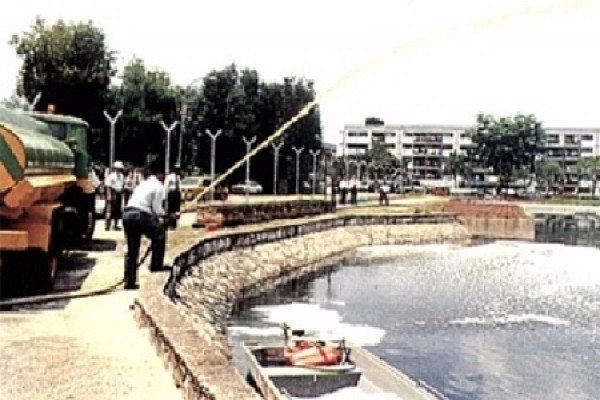The difference between the chemicals used in river management and the deodorizing agents used in sewage treatment
Purification of rivers, lakes, ponds, ditches, and scenic water bodies
Developed through biotechnology research and development, the specialized bacterial strains for wastewater treatment mainly undergo microbial composite training and cultivation to produce metabolites. Glycoprotein, polysaccharides, protein cellulose, and DNA are used as flocculants, combined with various purified Bacillus species, to improve the biochemical performance and flocculation of sludge, effectively maintain the sedimentation ratio of sludge, prevent bacterial loss, and improve the removal rate of COD, ammonia nitrogen, toxic and harmful substances. This not only shortens the start-up time of the system, improves the stability and impact resistance of the system, but also effectively ensures the stable operation of the system.
Small rivers, lakes, ponds, ditches, scenic water areas, etc., are uniformly sprayed with a certain concentration of deodorizing and purifying agents based on water quality. The dosage of bacterial agents per ton of water is between 0.01 and 0.05 kilograms, and it should be treated three times continuously within 7 days. After three times, when the water quality significantly improves, it should be treated every 20-30 days.

Deodorization of organic wastewater
Deodorization treatment of organic wastewater in industries such as slaughterhouses, food processing, and leather processing. Dilute 0.01-0.1 kilograms of deodorizing and purifying agent 10 times per ton of sewage for spraying or evenly participate from the sewage discharge outlet. After 5-7 days, the odor was completely eliminated and the water quality improved significantly. The reduction of sludge sediment, especially the significant reduction of oil content, is beneficial for the collection, transportation, and consumption of sludge.
Deodorization of toilets and sewers
Dilute this product 5-10 times and spray it directly on the floor or pit of public toilets, or pour it into the toilet and sewer.
There are many different ways to use deodorants in some places. Different deodorants are used in different places, such as garbage deodorants, sewage deodorants, and animal husbandry deodorants.
The article originates from a deodorant manufacturer http://www.scneng.com.hk
-
06-11
"Environmental Doctor" Du Siyuan: Environmental Protection is a Lifestyle Attitude
There is a Hong Kong compatriot in Jiangmen who often frequents various farms and plantations, walks in mechanical factories, and is seen by others as the nemesis of environmental problems. He conside
-
03-16
Deodorant manufacturer: Deodorants reduce soil pollution
Waste is a chaotic mixture of various components. The accumulation of debris on the surface of soil can cause some chemical reactions, releasing harmful gases, which can lead to soil pollution and eve
-
12-01
Deodorant Manufacturers: Differences between Microbial Deodorants and Traditional Deodorants
The waste that is not needed in our daily life and work is called waste. Due to the large amount of waste discharged and the complex categories, there are great difficulties in reducing waste and deod
-
11-08
Application of Deodorant Manufacturers in Domestic Waste Treatment
Garbage is the waste generated in everyone's daily life and work. Due to its large discharge volume and complex and diverse composition, it poses great difficulties in reducing and deodorizing wa
